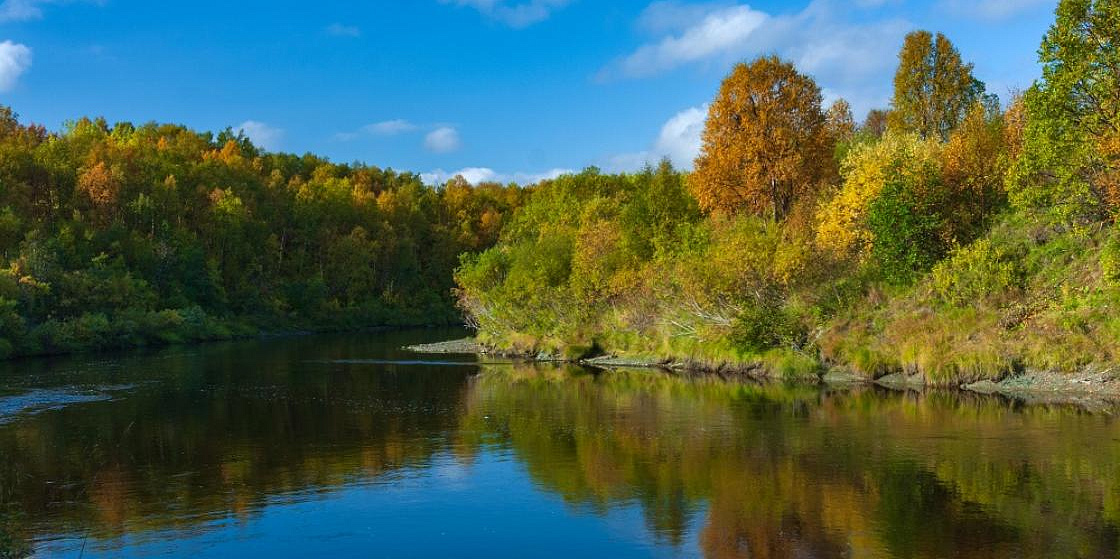
Photo: Kantor Vadim
Arctic Weekly: Security, Environment, and Land Plots
This week, the Interagency Committee of the Russian Security Council met for a session on security issues and challenges in the Arctic. Let us take a look at key highlights of the event:
- Russia grows increasingly concerned about the deployment of additional troops near its borders in the Arctic by the Western nations. This may destabilize the balance in the region and have an adverse impact on Russia’s relations with its neighbors in the Arctic.
- The Council sees further upgrading of this country’s military infrastructure in the Arctic as a means of countering potential threats coming from abroad.
- However, peace in the Arctic being Russia’s top priority, it will take steps to ensure the capacity-building of the Arctic Council as a key international forum on circumpolar issues. Russia will focus on promoting international cooperation and mutual trust between the Arctic nations.
- Russia intends to further explore and develop the natural riches of the Arctic, including oil, gas and metals, as well as invest into development of the Northern Sea Route.
- Russia is determined to carry on efforts aiming to safeguard the environment of the Arctic.
And now on to other news.
Environmental agenda for the High North. An international forum themed “Russia’s Arctic Council Chairmanship – Environmental Agenda for Russia and the World” took place in Moscow this week. A series of events were hosted as part of the forum, such as the International Media Congress of the Barents Euro-Arctic Council Member Countries and thematic sessions on Arctic marine and coastal environment, shipping activities, wildlife conservation, natural resource management and environmental protection, climatic challenges in the Arctic etc.
Arctic Hectare. The Russian parliament has okayed the bill authorizing the regional governments of the Russian Arctic to transfer ownership of land plots sized up to 1 hectare (about 2.5 acres) to any Russian national willing to settle and/or launch a business project in the country’s High North as part of the program known as the Arctic Hectare. The bill is expected to be signed into law in the near future.
Far East: investment and jobs. According to the federal government, in recent years, more than 1.8 trillion rubles were invested into Far Eastern regions of Russia. This resulted in creation of nearly 75,000 jobs and establishment of more than 400 new companies. The government believes that in the coming years the investment will reach some 9 trillion rubles, and 192,000 new jobs will be created along with more than 2,000 new businesses.
Hydrogen and the Kola NPT. The Kola Nuclear Power Plant located in high latitudes will host a new hydrogen production test facility. The NPP’s management pledged to launch an electrolysis unit with an output of 1 MW by 2023, to be further expanded to 10 MW. If successful, the project will serve as a model throughout Russia’s energy sector.
Leadership through propulsion. The Krylov State Research Center, a shipbuilding research and development institute headquartered in St. Petersburg, kicked off the design of the electric propulsion system with a capacity of 120 megawatts for the new Leader-class Russian nuclear-powered icebreaker. Such icebreakers are expected to make the Northern Sea Route passable all year round.
Carbon-free metal. Mining company Nornickel announced the start of production of carbon-neutral nickel. The company stated that efforts are made to mitigate the carbon footprint of its production, including steps to cut CO2 emissions across the whole production chain.
A new oil cluster? Gazprom Neft, a major Russian-based oil corporation, kicked off drilling operations at its new site in northern Yamal, Russia. The deposit is expected to serve as a starting point for a new oil cluster in the Russian Arctic containing some 1.1 billion tonnes of crude oil.
A rescue ship for the NSR. The Russian Maritime Rescue Service commissioned the construction of a new rescue and salvage ship fitted with a propulsion engine of at least 18 MW. The vessel will be deployed in the Arctic along the Northern Sea Route.
- Russia grows increasingly concerned about the deployment of additional troops near its borders in the Arctic by the Western nations. This may destabilize the balance in the region and have an adverse impact on Russia’s relations with its neighbors in the Arctic.
- The Council sees further upgrading of this country’s military infrastructure in the Arctic as a means of countering potential threats coming from abroad.
- However, peace in the Arctic being Russia’s top priority, it will take steps to ensure the capacity-building of the Arctic Council as a key international forum on circumpolar issues. Russia will focus on promoting international cooperation and mutual trust between the Arctic nations.
- Russia intends to further explore and develop the natural riches of the Arctic, including oil, gas and metals, as well as invest into development of the Northern Sea Route.
- Russia is determined to carry on efforts aiming to safeguard the environment of the Arctic.
And now on to other news.
Environmental agenda for the High North. An international forum themed “Russia’s Arctic Council Chairmanship – Environmental Agenda for Russia and the World” took place in Moscow this week. A series of events were hosted as part of the forum, such as the International Media Congress of the Barents Euro-Arctic Council Member Countries and thematic sessions on Arctic marine and coastal environment, shipping activities, wildlife conservation, natural resource management and environmental protection, climatic challenges in the Arctic etc.
Arctic Hectare. The Russian parliament has okayed the bill authorizing the regional governments of the Russian Arctic to transfer ownership of land plots sized up to 1 hectare (about 2.5 acres) to any Russian national willing to settle and/or launch a business project in the country’s High North as part of the program known as the Arctic Hectare. The bill is expected to be signed into law in the near future.
Far East: investment and jobs. According to the federal government, in recent years, more than 1.8 trillion rubles were invested into Far Eastern regions of Russia. This resulted in creation of nearly 75,000 jobs and establishment of more than 400 new companies. The government believes that in the coming years the investment will reach some 9 trillion rubles, and 192,000 new jobs will be created along with more than 2,000 new businesses.
Hydrogen and the Kola NPT. The Kola Nuclear Power Plant located in high latitudes will host a new hydrogen production test facility. The NPP’s management pledged to launch an electrolysis unit with an output of 1 MW by 2023, to be further expanded to 10 MW. If successful, the project will serve as a model throughout Russia’s energy sector.
Leadership through propulsion. The Krylov State Research Center, a shipbuilding research and development institute headquartered in St. Petersburg, kicked off the design of the electric propulsion system with a capacity of 120 megawatts for the new Leader-class Russian nuclear-powered icebreaker. Such icebreakers are expected to make the Northern Sea Route passable all year round.
Carbon-free metal. Mining company Nornickel announced the start of production of carbon-neutral nickel. The company stated that efforts are made to mitigate the carbon footprint of its production, including steps to cut CO2 emissions across the whole production chain.
A new oil cluster? Gazprom Neft, a major Russian-based oil corporation, kicked off drilling operations at its new site in northern Yamal, Russia. The deposit is expected to serve as a starting point for a new oil cluster in the Russian Arctic containing some 1.1 billion tonnes of crude oil.
A rescue ship for the NSR. The Russian Maritime Rescue Service commissioned the construction of a new rescue and salvage ship fitted with a propulsion engine of at least 18 MW. The vessel will be deployed in the Arctic along the Northern Sea Route.
28 June 2021




